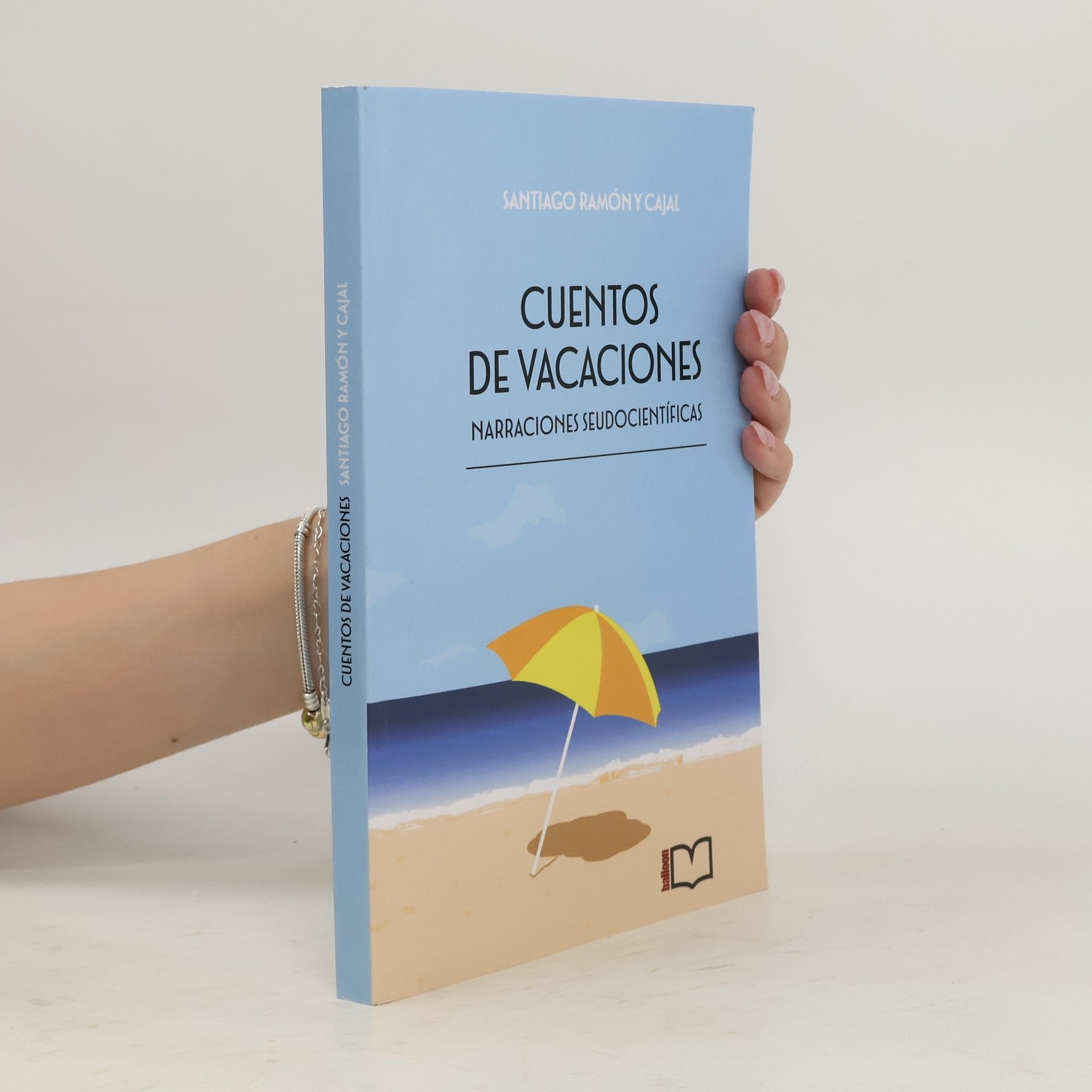Estos Cuentos de vacaciones revelan al lector una faceta poco conocida de Santiago Ramón y Cajal (1852-1934): su habilidad como escritor de ciencia-ficción. Los cinco relatos que componen esta obra, a los que Cajal calificó de narraciones seudocientíficas, compaginan el realismo que les confiere el estar basados en hechos o hipótesis racionales con otros aspectos que para su autor son fundamentales: las contradicciones de la personalidad humana, los matices del Bien y del Mal, el interés por los misterios del subconsciente, la sugestión, la hipnosis, todo ello impregnado del sentido poético y detallista de los escritores de principios del siglo xx y de una intención moralizadora. A lo largo de los cinco cuentos desfilan personajes que, premeditadamente, no son símbolos, sino hombres y, en consecuencia, ofrecen las pasiones, los defectos y las limitaciones de las personas de carne y hueso.
Santiago Ramón y. Cajal Books
Santiago Ramón y Cajal was a pioneering Spanish neuroscientist whose investigations into the microscopic structure of the brain laid the groundwork for modern neuroscience. His legendary artistic renderings of neural cells remain valuable for educational purposes today. Cajal experimentally demonstrated that nerve cells are not continuously connected but rather contiguous, providing crucial support for the neuron doctrine. He also discovered the interstitial cell of Cajal, a novel cell type vital to the function of the digestive system.





Beitrag zum Studium der Medulla Oblongata des Kleinhirns und des Ursprungs der Gehirnnerven
- 148 pages
- 6 hours of reading
Das Buch präsentiert die bahnbrechenden Erkenntnisse des spanischen Medizinnobelpreisträgers Santiago Ramón y Cajal, der als Vater der modernen Neurowissenschaften gilt. In diesem Nachdruck seines Originals von 1896 werden seine Beobachtungen und Theorien über das Nervensystem und die neuronale Struktur detailliert dargestellt. Cajal kombiniert präzise wissenschaftliche Analysen mit einer poetischen Sprache, die die Schönheit und Komplexität des menschlichen Gehirns hervorhebt. Seine Arbeiten haben grundlegende Impulse für die Neurobiologie gesetzt und sind bis heute von großer Bedeutung.
Byla již napsána přemíra učených pojednání o tom, jak se to či ono dělá, nemluvíc ani o nejrůznějšich návodech k vlastni vědecké práci. Cajalova kniha není rozhodně z druhu příruček a návodů „snadno a rychle“, neboť autor správně uznává, že komu není s hůry dáno, ani v jeho knize nenajde. To mu však nebrání, aby napsal celou řadu vtipných causerií, jež přímo i nepřímo souvisí s vědeckým bádáním — nevyjímajíc ani otázku manželské polovice vědeckého pracovníka. S chutí si je přečtou jak vědečtí adepti, tak i ti, kdo již drahnou dobu patři do cechu vědátorů. Objeví tam mnoho, co jim snad ušlo a co břitké pero slavného španělského histologa Ramóna y Cajala podává neobyčejně vtipnou a zábavnou formou. Don Santiago Ramón y Cajal se narodil I. května roku 18S2. Po svém otci, prosektoru anatomie v Saragose, zdědil sklony k lékařskému bádání a tomu pak zasvětil celý svůj život. Věnoval se takřka výlučně mikroskopickému výzkumu nervového systému a v tomto oboru se stal světovým odborníkem. Nobelova cena, jež mu byla udělena roku 1906, byla sice plně zaslouženým oceněním jeho osobnosti, leč rok 1906 ani zdaleka neoznačuje vrchol jeho celoživotní vědecké práce. Cajal ve vědecké a spisovatelské činnosti pokračoval až do smrti 17. října 1934. V jeho odkazu je na 300 vědeckých pojednání a 18 knih, mezi něž patří i „Pravidla a rady k vědeckému bádání“.